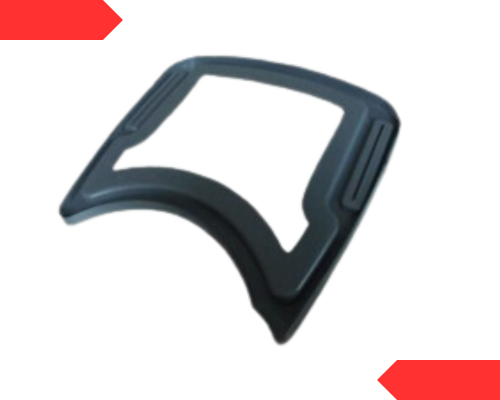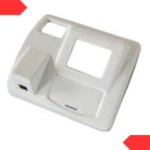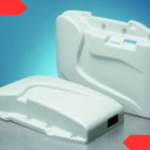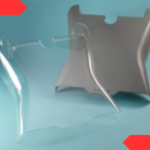Cabin Headliners
The headliner in an automobile cabin plays a significant role in enhancing the interior aesthetics, acoustics, and comfort for both drivers and passengers. Vacuum forming is a popular manufacturing process utilized to create headliners. This section will discuss the advantages of using vacuum forming in the production of automobile cabin headliners.

Design Flexibility:
One of the primary advantages of vacuum forming in creating automobile cabin headliners is the design flexibility it offers. Vacuum forming allows manufacturers to produce headliners in various shapes, sizes, and contours, accommodating the specific design requirements of different vehicle models. This flexibility enables designers to incorporate unique features such as curves, cutouts, and recesses to enhance the overall interior aesthetics and functionality.
Lightweight Construction:
Automobile manufacturers continually strive to reduce the weight of vehicles to improve fuel efficiency and overall performance. Vacuum-formed headliners contribute to lightweight construction due to the nature of the process and the materials used. The vacuum forming process utilizes lightweight plastic materials, resulting in headliners that are significantly lighter than alternative materials such as fabric or foam. The reduced weight contributes to fuel efficiency, reduces the vehicle’s center of gravity, and enhances handling characteristics.
Durability and Longevity:
Vacuum-formed headliners exhibit excellent durability and longevity, making them well-suited for the demanding automotive environment. The plastic materials used in vacuum forming are resistant to wear, tear, and fading, ensuring that the headliners maintain their appearance and functionality over time. They are also less prone to sagging, wrinkling, or discoloration that can be common with fabric-based headliners, contributing to a more visually appealing and longer-lasting cabin interior.
Enhanced Acoustic Insulation:
Automobile cabin headliners manufactured through vacuum forming offer improved acoustic insulation compared to alternative materials. The plastic materials used in vacuum forming possess inherent sound-dampening properties, reducing external noise intrusion into the cabin. This leads to a quieter and more comfortable driving experience, enhancing the overall cabin ambience and reducing driver and passenger fatigue.
Easy Integration of Features:
Vacuum-formed headliners can be designed with integrated features, such as mounting points for interior lights, sunroofs, air conditioning vents, and speakers. These integrated features simplify the installation process and ensure precise fitment of various cabin components, reducing assembly time and costs for automotive manufacturers. Additionally, the design flexibility of vacuum forming allows for easy customization and adaptation to different vehicle models and options.
Easy Maintenance and Cleaning:
Vacuum-formed headliners are relatively easy to maintain and clean compared to fabric-based alternatives. The smooth and non-porous surface of the vacuum-formed plastic makes it resistant to stains, dirt, and dust accumulation. Cleaning can be done using mild soap and water, allowing for quick and hassle-free maintenance. Additionally, the plastic surface is less likely to retain odors, contributing to a fresh and pleasant cabin environment.
Cost-effectiveness:
Vacuum forming offers a cost-effective solution for producing automobile cabin headliners. The process involves lower tooling costs compared to alternative methods such as injection molding or fabric wrapping. Moreover, the efficient material usage in vacuum forming minimizes waste and reduces overall production costs. This cost-effectiveness makes vacuum-formed headliners an attractive choice for automotive manufacturers.




